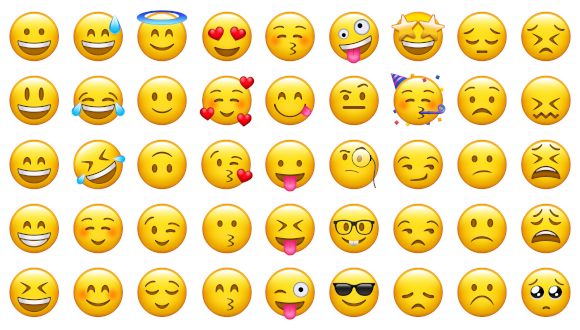TAU researchers say use of pictures and emojis can signal less power and authority

Study suggests employees may want to minimize their use of online graphics
Support this researchIf you wish to signal power to your colleagues, your boss, or your subordinates, you should consider reducing your use of pictures and emojis and increasing your use of words, concludes a new study from the Coller School of Management at Tel Aviv University (TAU).
The study examined the response of American participants to verbal vs. pictorial messages in different online contexts. In all experiments, the respondents attributed more influence to the person who chose a verbal vs. a visual representation of a given message, and that employees who use pictures and emojis in their emails or Zoom profiles, or even company pictorial logos on t-shirts, are perceived as less powerful than those who use words.
“Today we are all accustomed to communicating with pictures, and the social networks make it both easy and fun,” say Dr. Elinor Amit and Professor Shai Danziger of the Coller School. “Our findings, however, raise a red flag: In some situations, especially in a work or business environment, this practice may be costly, because it signals low power. Professionals should think twice before sending a picture or emoji to people in your organization, or in any other context in which you wish to be perceived as powerful.”
The paper was published in the journal Organizational Behavior and Human Decision Processes. The researchers discuss the findings in this video:
To test their hypothesis, the researchers conducted a series of experiments in which various everyday scenarios were presented to hundreds of American respondents. In one experiment, participants were asked to imagine shopping at a grocery store and seeing another shopper wearing a Red Sox t-shirt. Half of the participants were shown a t-shirt with the verbal logo RED SOX, while the other half saw the pictorial logo. Those who saw the t-shirt with the pictorial logo rated the wearer as less powerful than those who saw the verbal logo. Similar results recurred in a range of other contexts.
The researchers also examined the effects of picture versus word use in a professional context. Because of COVID-19, online meetings using platforms such as Zoom and Microsoft Teams have become an essential organizational fixture. Participants were asked to choose one of two co-participants to represent them in a competitive game that suited people with high social power. Critically, one co-participant had purportedly chosen to represent themselves with a pictorial profile, while the other had purportedly chosen to represent themselves with a verbal profile. Sixty-two percent of the participants selected the co-participant who chose to represent themselves with a verbal profile.
“Why do pictures signal that a sender is low power? Research shows that visual messages are often interpreted as a signal for desire for social proximity,” Dr. Amit says. “A separate body of research shows that less powerful people desire social proximity more than powerful people do. Consequently, signaling that you’d like social proximity by using pictures is essentially signaling you’re less powerful.
“It must be noted that such signaling is usually irrelevant in close relationships, as in communications between family members. However, in many arenas of our lives, especially at work or in business, power relations prevail, and we should be aware of the impression our messages make on their recipients. Our findings raise a red flag: When you want to signal power, think twice before sending an emoji or a picture.”
The study was conducted in collaboration with Professor Pamela K. Smith of the Rady School of Management at University of California San Diego (UCSD).